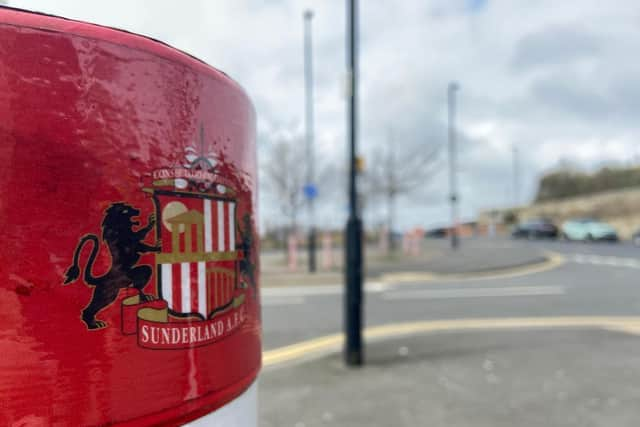How Sunderland's budget compares to their Championship rivals - and what we can expect from them
and live on Freeview channel 276
They return to pre-season training midway through next week with a lot of business still to be done, and the small matter of another ownership issue to settle.
So what should we realistically be expecting from the Black Cats next season, and where do they compare to their new divisional rivals?
Advertisement
Hide AdAdvertisement
Hide AdAs a starting point, we explored how their recent budgets compare to the standard in the league, how they plan to plot their way through the division and how long that is likely to take.


Note that these wage bills are taken from the most recently available accounts, which means not last season but the 2019/20 campaign. They also refer to a club’s entire wage bill, not just the playing staff.
So while not conclusive, they nevertheless offer a good guide to the financial landscape, and where Sunderland might fit in…
THE TOP TIER
BURNLEY - £100,094,000 (Premier League season)


WATFORD - £68,066,000
WEST BROM - £66,888,000 (Premier League season)
NORWICH CITY - £66,623,000
SHEFFIELD UNITED - £56,518,365 (Premier League season)
Five teams will enjoy the benefit of parachute payments next season and unsurprisingly, they all feature in the top six when it comes to the bookies’ favourites to win promotion.
Advertisement
Hide AdAdvertisement
Hide AdAll five will face challenges next season, whether it be in adjusting to two new head coaches in Vincent Kompany and Rob Edwards at Burnley or Watford respectively, or recalibrating to a second season at Championship level in the case of West Brom and Sheffield United.
But as the numbers clearly show, they will enjoy a major competitive advantage both in the base quality of their squads, and what they can offer potential new recruits.
Five of the last six automatically promoted teams have been bouncing straight back from Premier League relegation, underlining that while the play-off positions are often more open, the top two is an incredibly difficult party to crash.
MID-TABLE SPENDERS
STOKE CITY - £47,893,000
READING - £32,309,174
BRISTOL CITY - £30,251,600
BIRMINGHAM CITY - £30,151,864
SWANSEA CITY - £27,791,990
MIDDLESBROUGH - £26,963,000
CARDIFF CITY - £25,963,000
BLACKBURN ROVERS - £25,700,000
HUDDERSFIELD TOWN - £24,636,751
PRESTON NORTH END - £22,886,000
QPR - £21,908,000
MILLWALL - £20,835,000
This is arguably a group of sides that show both the challenge and the opportunity for Sunderland next season.
Advertisement
Hide AdAdvertisement
Hide AdIt is a sobering thought that many of the teams that the Black Cats will need to better over a 46-game season are likely starting out with a playing budget double the size.
Yet the struggles many of these sides faced last season also underlines how budget and value for money can be two very different things. QPR, for example, have slashed their playing budget in recent years but have in the last couple of seasons produced a more cohesive and effective team, with a decent style too.
Not benefiting from parachute payments, many of these teams have in recent times incurred heavy losses, with Reading last season hit with a points deduction. And so over a period of time, Sunderland hope that sustainable growth and smart recruitment will push them through this group. But in terms of Championship experience and probably in budget, they will be looking to punch above their weight in relative terms this season.
UP AGAINST IT?
LUTON TOWN - £14,109,130
SUNDERLAND - £13,363,000 (League One season)
COVENTRY CITY - £13,371,941
HULL CITY - £8,443,408 (League One season)
ROTHERHAM UNITED - £8,214,551
BLACKPOOL - £7,671,920 (League One season)
WIGAN ATHLETIC - £1,507,207 (League One season)
Luton Town’s remarkable run to the play-off semi finals last season are the perfect example of how culture and strong recruitment over a period of time can help a side punch above their weight.
Advertisement
Hide AdAdvertisement
Hide AdSunderland can also take encouragement from Blackpool, who comfortably survived in their first season at Championship level and produced some impressive results along the way.
The statistics, though, tell their own story. Half of the last twelve teams to suffer relegation from the Championship had just come up from League One. The gap between the two leagues is significant, and these budgets underline a major reason as to why.
SO WHERE ARE SUNDERLAND GOING TO FIT INTO ALL OF THIS?
Sunderland’s Sporting Director made clear in the immediate aftermath of the Wembley win that promotion would not lead to the club deviating from its model.
That was a clear signal that the budget would not grow rapidly or unsustainably. Sunderland will again target players whose value they believe can grow, and that will in some cases mean taking calculated risks. The Black Cats will also look to use the loan market well to try and cut the gap on some of their bigger-spending competitors.
Advertisement
Hide AdAdvertisement
Hide AdKristjaan Speakman also spoke of the need to manage expectations ahead of the new campaign and the importance of communicating with fans around that, something which has been made considerably more difficult by the club’s ownership saga being reignited over the last fortnight.
How big an impact that has on the club’s planning remains to be seen, though sources have suggested they believe it should not be a major impediment in the short term at least. All shareholders have funding obligations and the budget for a Championship return was largely set even before the play-off final.
Speakman, though, was making clear that Sunderland will have to try and punch above their weight financially in at least the first season back at the level.
The idea is that through player development and sales, they can strengthen the squad gradually and sensibly.
Advertisement
Hide AdAdvertisement
Hide AdUltimately, their budget will be competitive and likely will end up in that mid-tier bracket we mentioned above. They will recruit a number of players this summer and are already planning to hand out improved contracts to many in the current squad. A season-card base of close to 30,000 also gives them a revenue advantage over many rivals, and so consolidation should absolutely be the minimum expectation.
There are also plenty of other reasons for cautious optimism, depending on how the ownership saga develops. Alex Neil has proved himself a very capable manager at the level, and there is a unity about the group following their outstanding end to the campaign.
Though further recruitment will clearly be vital, they also have a number of players who technically look well-suited to making the step up.
Sunderland want to make a significant impact this season but four years in League One mean they are coming from a long way back, off the pitch as well as on it.
Advertisement
Hide AdAdvertisement
Hide AdWhat’s striking about last season’s final Championship table is how broadly budget was a strong indicator of final performance. One or two significantly over performed (Huddersfield, Luton, Coventry to an extent), and one or two significantly under performed (West Brom, Birmingham), but this is a division where for the most part major investment has been required.
A palatable resolution to the current ownership stand-off and an excellent summer in the market can allow the Black Cats to attack the new season from a strong position.
The road back to the top will undoubtedly be a long one, but get it right and it could also be a fun one.
The hard work starts now.